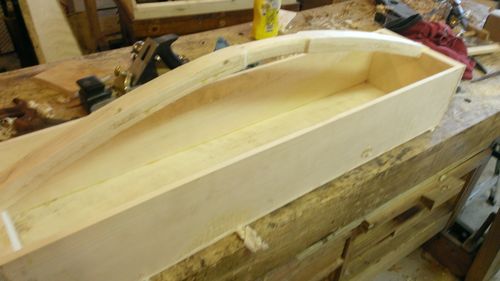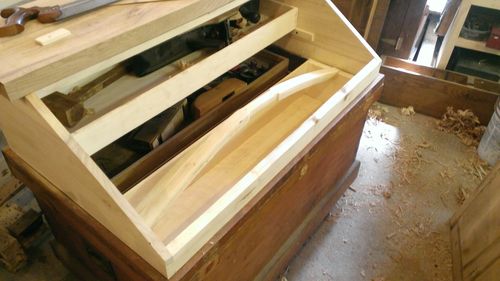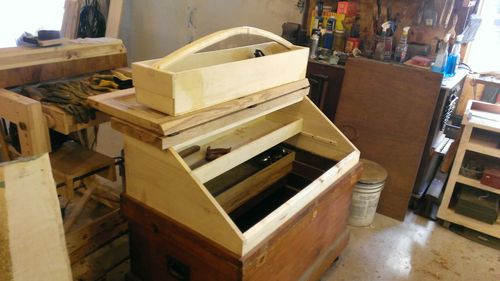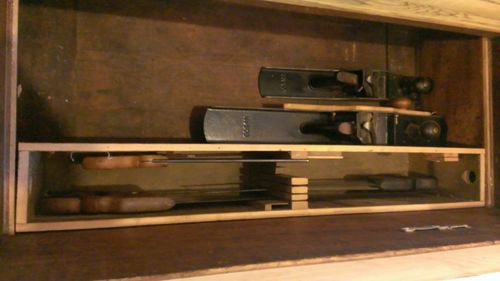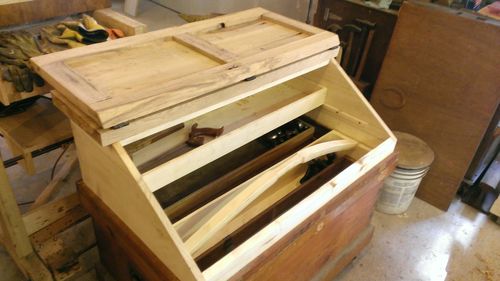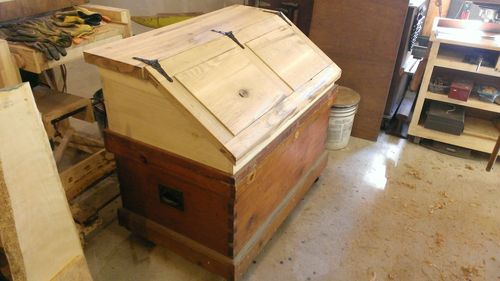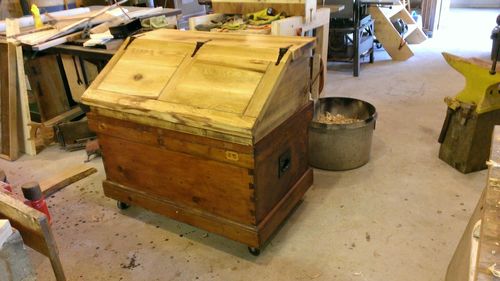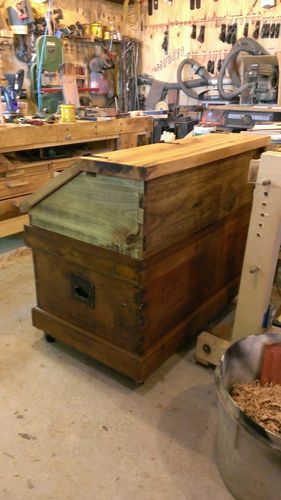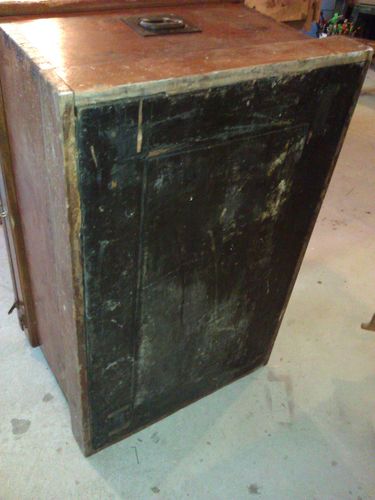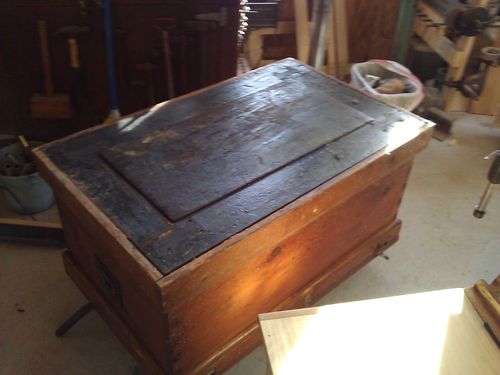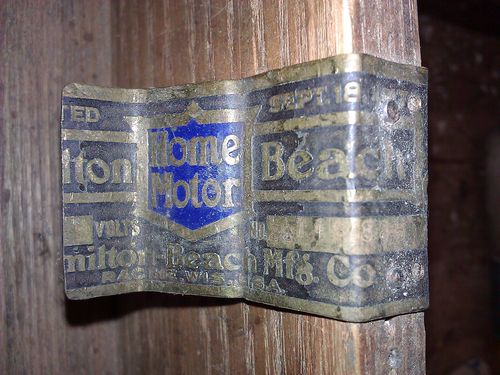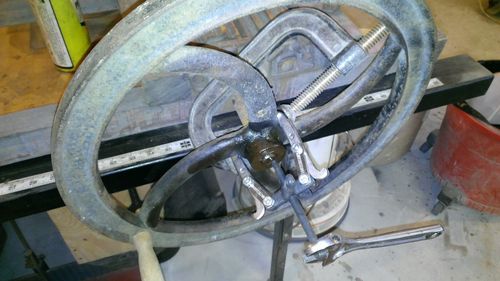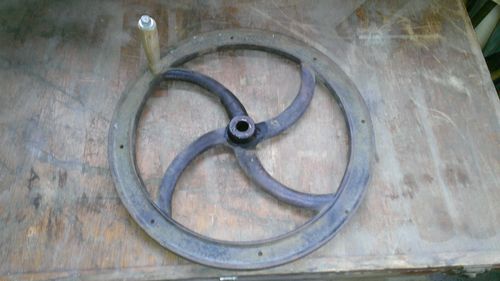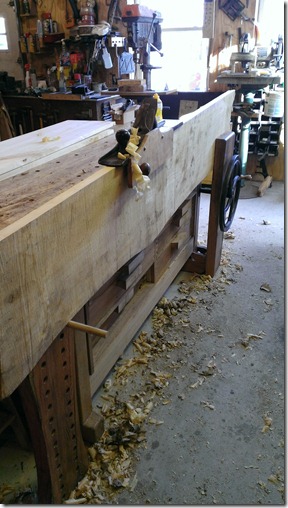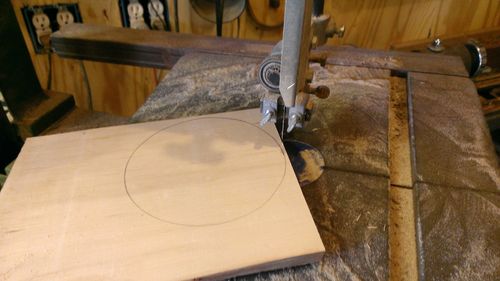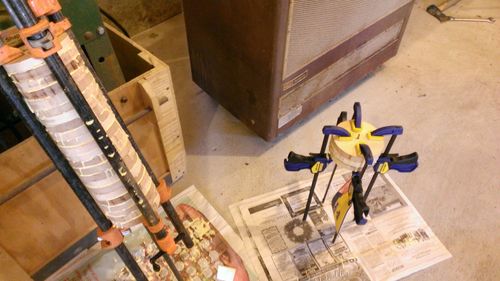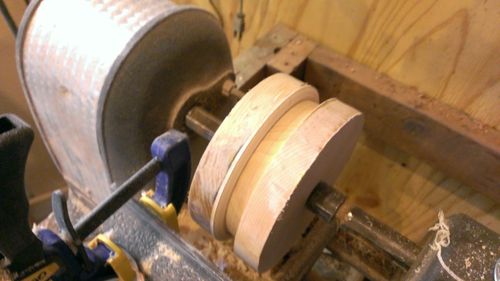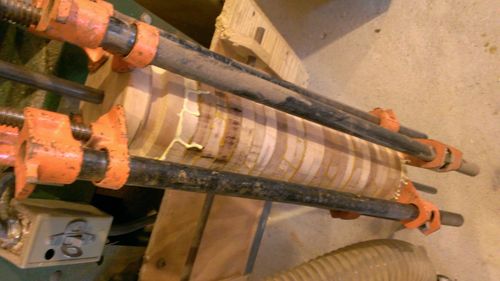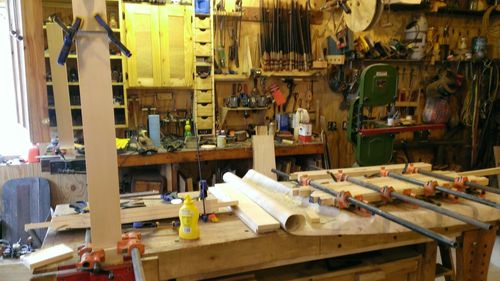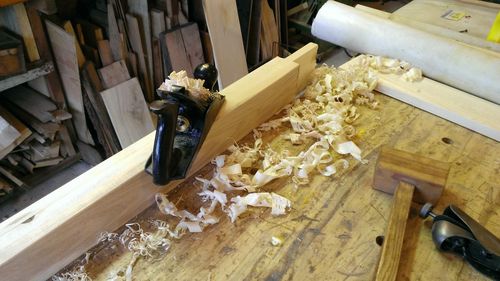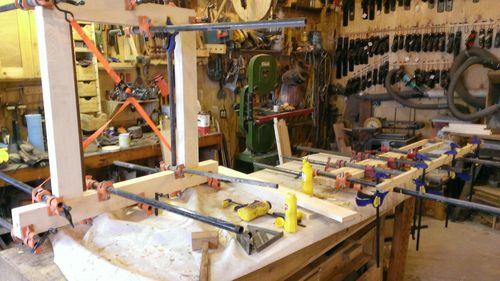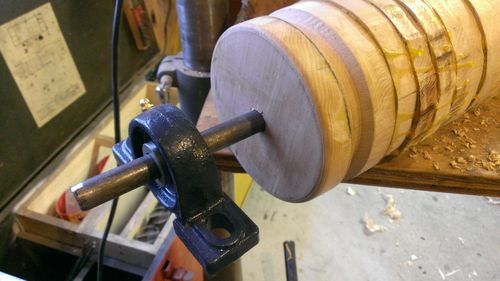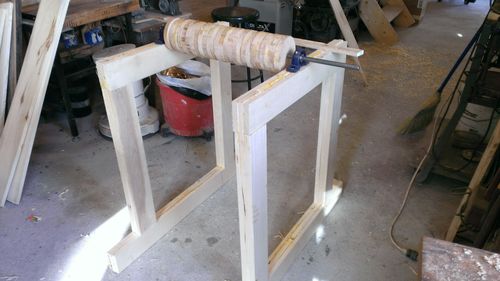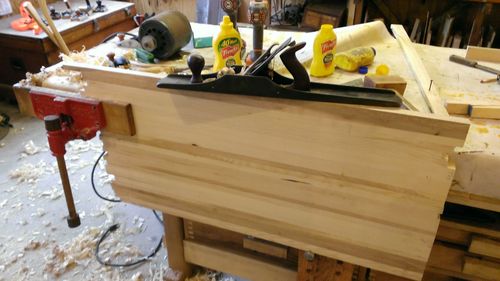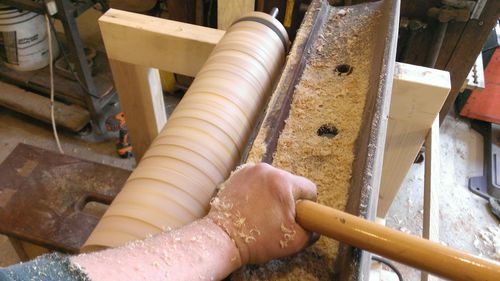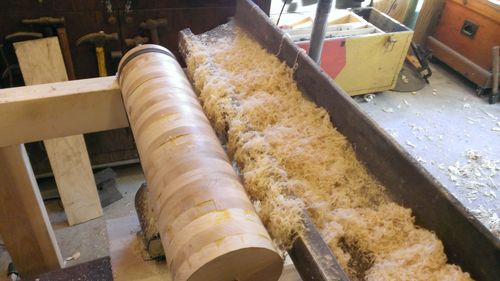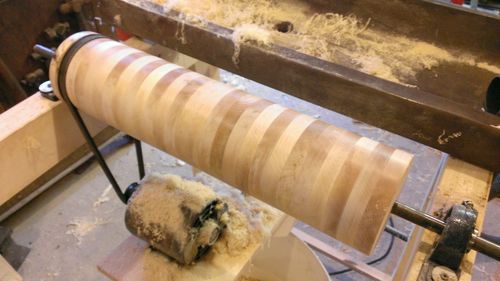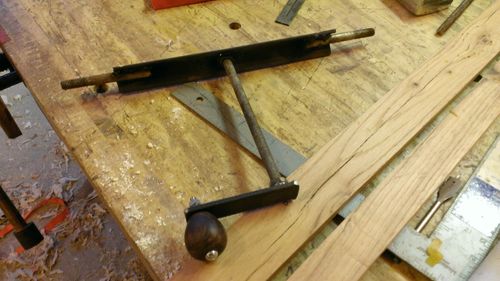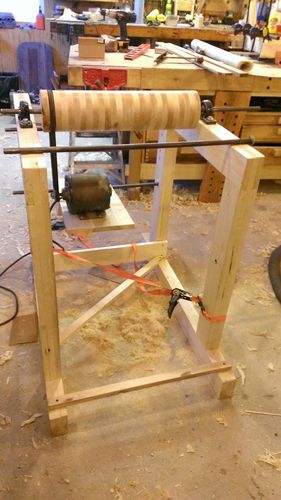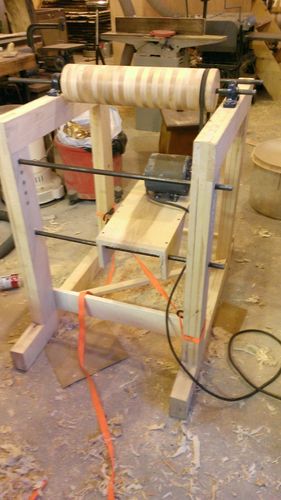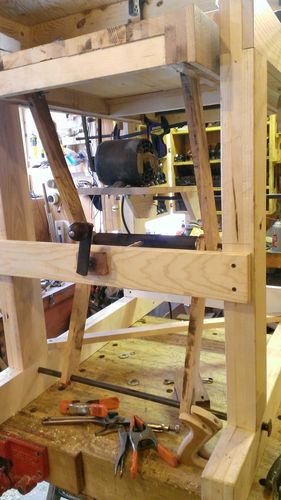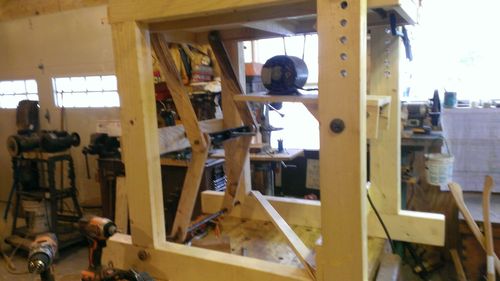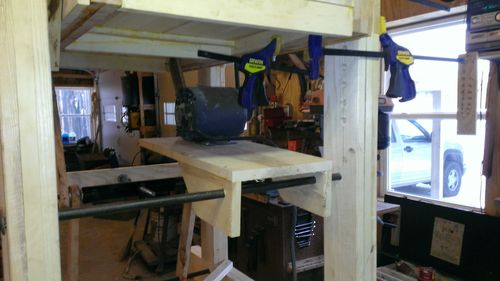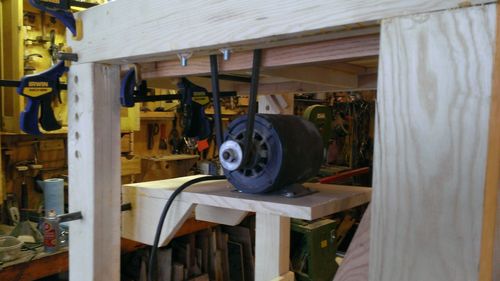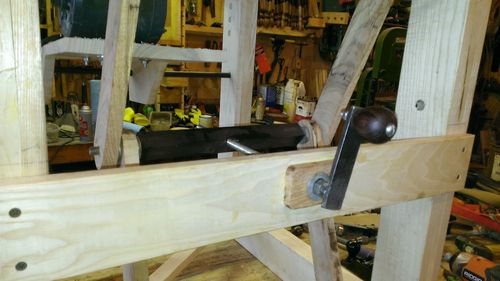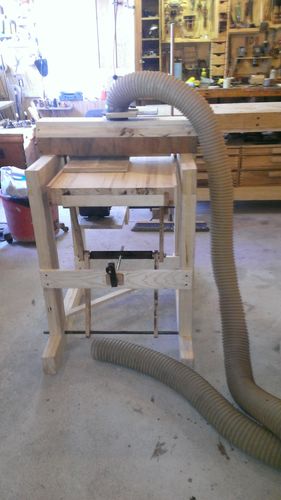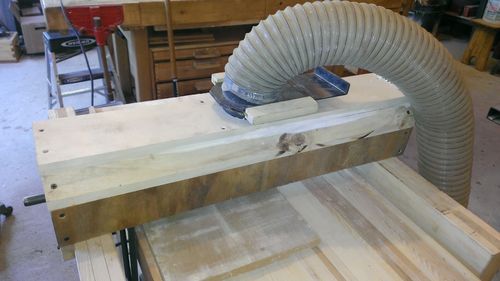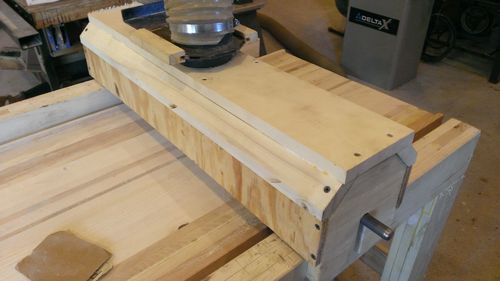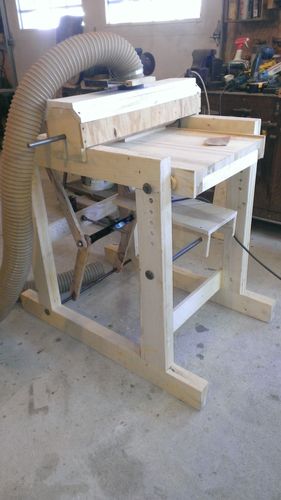Display case. The request is in.
July 29, 2013 Leave a comment

So my wife has been putting together some pieces for a display case for some of her old crocks. We’ve found the pieces, now the fun begins.
So here is the display part. It doesn’t have a bottom, so the table top will be the bottom of the display. It will have one more shelf added.

The idea is to make a bench or table that it sits on. Here are the future legs.

Here is what I have to work with.

The Idea is something like this. I’ll remove the door knob. The make a cut along the red line. Part A will become the table top.
Part D will be the front of the face frame (or apron), with C and E being cut down for the end frames (or aprons). A back piece will be made from dimensional lumber since it will be against a wall and never seen.

I could dowel the frame to the legs. If I did a threw tenon, the end would show, and I don’t want that. I could 45 the corners and notch the legs with inside braces. I’m looking for idea’s.
How would you build it?
Thanks for the input.
The Build begins
After getting home from work,

I took a stab on figuring out how this would go together. The first thing I did was took the door completely apart. I managed to find the pins, popped them out and the door was in pieces.


This brought up some old joinery

Next I cut the pieces for the top to size.

I decided to dowel the frame. It seemed easier and less intrusive to the material around it. I made a template so the dowels all drilled the same.

A dry fit showed it was coming out like I had envisioned.


My problem began when I went to grab my dowels. Problem being I didn’t have any. So…….I made some. The 40 mile round trip to Home Depot just wasn’t in my plan.


I like to add a little crimp to my dowels. It help the glue hold and help round them out as well.

Added some additional support


And Glued it all up.

Added some corner brackets

And called it a day



























